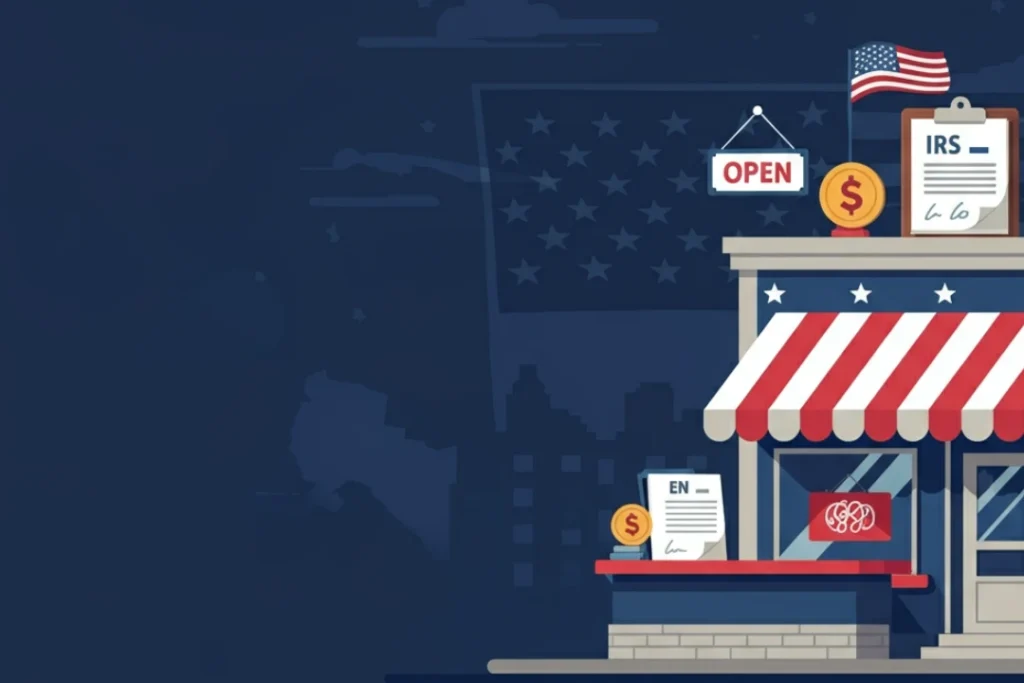Dreaming of launching your own business in the United States? It’s a bold, rewarding step—one that calls for a mix of passion, planning, and dedication. If you’re wondering how to start a small business in the USA, this beginner-friendly guide will help you get organized and move forward with confidence.
Craft Your Business Plan
Think of your business plan as your map. This document clarifies your goals, explores your target market, details your services or products, and sketches out how you’ll make money. Take the time to craft a business plan you believe in—it will help you stay focused and explain your vision to others.
Define Your Mission and Vision
Why are you starting this business, and what do you hope it becomes? Write a short mission statement that sums up your purpose, then add a vision statement about where you see your company going in the future. These ideas will help keep you centered as your small business grows.
Register Your Business and Handle Legalities
Before you make your first sale, you’ll need to make your business official. Most entrepreneurs in the U.S. choose from these legal structures: sole proprietorship, partnership, LLC, or corporation. Registration is important for tax purposes, to protect your name, and to meet state and federal regulations.
- Choose a Legal Structure: Each option—LLC, sole proprietorship, partnership—affects taxes and liability differently. Research what fits your needs, or get advice from a business advisor.
- Protect Your Business Name: Pick a unique name and check if it’s available in your state. You might also register a DBA (“Doing Business As”) if you want to operate under a different name.
- Apply for Federal/State Tax IDs: The IRS issues an Employer Identification Number (EIN) for banking and tax filings. Many states require their own ID for tax or employment purposes.
Secure Your Funding
Getting your business idea off the ground usually takes capital, whether you’re opening a coffee shop or launching an online store. There are several ways to cover startup costs. What works best depends on your situation and comfort level with debt and outside investment.
Explore Funding Options
You might start small with personal savings or ask friends and family for help. Small business loans from your local bank can provide more structured funding, or you can seek out investors if you’re looking for larger amounts. No matter how you fund your business, make sure you know what each option means for your future.
Set Up Your Business Operations
This stage is about setting up what you need for smooth day-to-day operations. A little effort here will save you hours down the road. Organization is the key, from finances to compliance.
Establish Your Operational Foundation
Open a dedicated business bank account to keep your finances straightforward. Make sure you have any permits or licenses required by your state or city—requirements vary by industry. Choose reliable suppliers if your business depends on inventory, and use accounting software or a professional to keep your books in order.
Develop Your Marketing and Sales Strategy
Attracting and keeping customers is essential for every small business. With so many tools available, it’s easier than ever to start building buzz and growing your reach. A basic marketing plan is your launchpad.
- Know Your Audience: Identify who you want to serve, what problems you solve, and how your offering benefits them. The clearer you are, the more effectively you can market your business.
- Establish an Online Presence: Build a website that highlights your expertise and products. Set up accounts on social networks where your customers spend time, and consider creating a local listing to improve visibility.
- Create a Simple Marketing Plan: Think about strategies like email newsletters, online ads, or content marketing to drive leads your way. Local businesses can benefit from engaging with their community and using SEO to reach new customers nearby.
Conclusion: Launch and Learn
Following these steps on how to start a small business in the USA, you’ll be ready for your grand opening day. Launching is just the beginning—be flexible and use feedback from customers to fine-tune your approach. Growth happens when you stay committed and keep learning, even when challenges pop up.
Next Steps on Your Journey
Gather feedback early and use it to improve your products or services. Keep your finances organized and set reminders for important deadlines, like tax filings. Remember, owning a small business in the USA is a journey—continual growth is part of the ride.
Frequently Asked Questions
What is the first step to starting a small business?
You’ll want to research your market and develop a solid business plan before making any big moves. This plan will give your new business structure and direction.
How much does it cost to start a small business in the USA?
Startup costs vary widely, from just a few hundred dollars for a small online venture to thousands for something like a retail shop or restaurant. Your best bet is to list expenses ahead of time so nothing catches you by surprise.
Do I need an LLC to start a business?
While an LLC offers legal protection by separating personal and business assets, it’s not required—sole proprietorships and partnerships are also common. Choose what matches your goals and risk level; the U.S. Small Business Administration has a helpful guide for comparing your options.
Can I start a business without any money?
You can begin a service business or freelance with next to no startup funds, using skills you already have. Getting your first paying client often requires creativity and hustle, but it is possible.
How do I choose the right business structure?
Think about liability, taxes, and how you want your business to operate day-to-day. Many new small business owners pick an LLC for its flexibility and protection, but each situation is different.
You may also visit: https://todayzilla.com/



